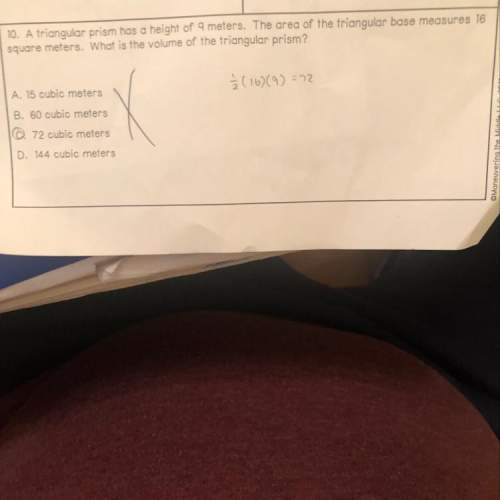Complete the following statements to prove that ∠ikl and ∠jld are supplementary angles.
it is...

Mathematics, 01.08.2019 00:10 shetherealbrat
Complete the following statements to prove that ∠ikl and ∠jld are supplementary angles.
it is given that ∠eij ≅ ∠gji.
also, ∠eij ≅ ∠ikl and ∠gji ≅ ∠jlk, as they are corresponding angles for parallel lines cut by a transversal.
by the definition of congruent angles, m∠eij = m∠gji, m∠eij = m∠ikl, and m∠gji = m∠jlk.
so, m∠ikl = m∠jlk by the .
angle jlk and ∠jld are supplementary angles by the , so m∠jlk + m∠jld = 180°.
by the , m∠ikl + m∠jld = 180°.
therefore, ∠ikl and ∠jld are supplementary angles by definition.

Answers: 1


Another question on Mathematics

Mathematics, 21.06.2019 18:30
The lengths of two sides of a right triangle are given. find the length of the third side. round to the nearest tenth if necessary. a) y = 12/5x + 39/5 b) y = 5/12x + 5/39 c) y = 12/5x - 39/5 d) y = 5/12x - 5/39
Answers: 2

Mathematics, 21.06.2019 19:00
What is the expression in factored form? -x^2 + 3x + 28 a. (x-7)(x-4) b. -(x-7)(x+4) c. (x+4)(x+7) d. -(x-4)(x+7)
Answers: 2

Mathematics, 21.06.2019 19:10
What is the quotient of m^6/5 ÷ 5/m^2? assume m does not equal pl
Answers: 1

Mathematics, 21.06.2019 23:00
Is there a direction u in which the rate of change of f(x,y)equals=x squared minus 3 xy plus 4 y squaredx2−3xy+4y2 at p(1,2) equals 14? give reasons for your answer. choose the correct answer below. a. no. the given rate of change is smaller than the minimum rate of change. b. no. the given rate of change is larger than the maximum rate of change. c. yes. the given rate of change is larger than the minimum rate of change and smaller than the maximum rate of change.
Answers: 2
You know the right answer?
Questions

Mathematics, 17.12.2020 04:50



Biology, 17.12.2020 04:50

Mathematics, 17.12.2020 04:50

English, 17.12.2020 04:50

Mathematics, 17.12.2020 04:50

Mathematics, 17.12.2020 04:50

Mathematics, 17.12.2020 04:50


Mathematics, 17.12.2020 04:50





English, 17.12.2020 04:50



Health, 17.12.2020 04:50

Social Studies, 17.12.2020 04:50




